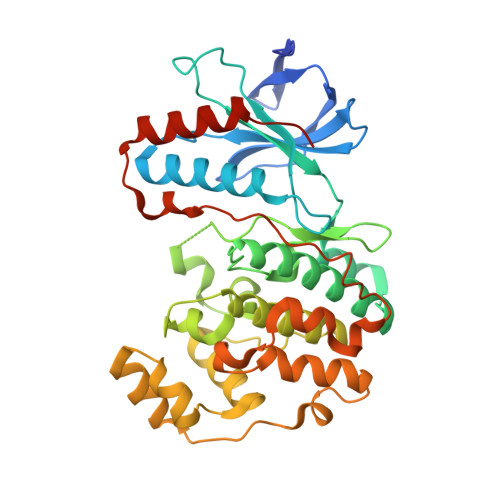Lattice stabilization and enhanced diffraction in human p38 alpha crystals by protein engineering.
Patel, S.B., Cameron, P.M., Frantz-Wattley, B., O'Neill, E., Becker, J.W., Scapin, G.(2004) Biochim Biophys Acta 1696: 67-73
- PubMed: 14726206
- DOI: https://doi.org/10.1016/j.bbapap.2003.09.009
- Primary Citation of Related Structures:
1R39, 1R3C - PubMed Abstract:
Mitogen-activated protein (MAP) kinase p38 alpha is activated in response to environmental stress and cytokines, and plays a significant role in inflammatory responses. For these reasons, it is an important target for the treatment of a wide range of inflammatory and autoimmune diseases. The crystals of p38 alpha that we obtained by published procedures were usually small, quite mosaic, and difficult to reproduce and thus posed a difficulty for the intensive high-resolution studies required for a structure-guided drug discovery approach. Based on crystallographic and biochemical evidences, we prepared a single point mutation of a surface cysteine (C162S) and found that it prevents aggregation and improves the homogeneity and stability of the enzyme. This mutation also facilitates the crystallization process and increases the diffracting power of p38 alpha crystals. Surprisingly, we found that the mutation induces a change in the conformation of a nearby surface loop resulting in stronger lattice interactions, consistent with the improved crystal quality. The mutant protein, because of its improved stability and strengthened lattice interactions, thus provides a significantly improved reagent for use in structure-based drug design for this important disease target.
Organizational Affiliation:
Department of Medicinal Chemistry, Merck Research Laboratory, PO Box 2000 RY50-105, Rahway, NJ 07065, USA.















